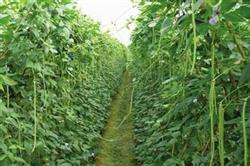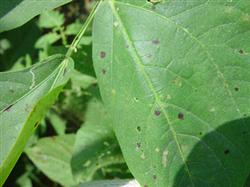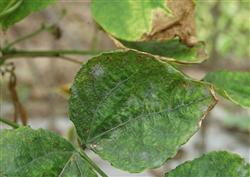Planting bean field management in winter is the key.

In the past, direct seeding was often used in the production of seedling beans, which ensured that the seedlings were strong on the basis of fully protecting the roots from cold injury, and that they could be sowed, harvested and listed early. In production, nutrition bowl is often used to raise seedlings, or 50-hole pot can be used to raise seedlings, sowing 2-3 grains in each hole, pouring water through water, and reasonably controlling the temperature. The most suitable seedling age is about 25 days. Reasonable close planting due to bean seedling growth in low temperature, weak light environment, photosynthesis is blocked, the nutrition of the plant itself is limited, so it must not be too dense in planting to prevent leaves from blocking each other's light. Generally take 70 cm, 50 cm large and small ridges (or double high ridges) planting, plant distance of about 30 cm, watering after planting, and then paddle hoe and then cover with plastic film. Field management in fertilizer and water management, from transplanting to flowering, should be based on water control, ploughing to promote roots, should be watered as little as possible, before the bean flowering, 15 kg ammonium sulfate per mu. During the podding period, topdressing was applied every 10 to 15 days, and ammonium sulfate was applied at a rate of 15 to 20 kg each time. If possible, carbon dioxide gas fertilizer should be applied every morning on a sunny day after flowering and properly ventilated 2 hours after application. In the later stage of bean growth, the plant is aging and the root system is aging. In order to prolong pod formation, 0.2% potassium dihydrogen phosphate can be sprayed for foliar fertilization. Beans stretched to draw the vine in time, but also in time to fork, wipe buds, try to avoid mutual light between leaves, plant height of 2 to 2.5 meters in time to pick the heart, to promote pods. Pay attention to get rid of the lower old leaves after each harvest.
- Prev

Main diseases and control methods of beans
The main diseases of beans are leaf spot, blight, blight, root rot and rust, and the pests are double bean borer, cutworm, thrips, leaf miner and leech. Integrated control techniques should be adopted to control them. The main methods of controlling diseases and insect pests are: selecting fields that have not been planted with leguminous crops for more than two years; clearing the fields.
- Next

Comprehensive control of bean rust and powdery mildew in greenhouse
At the initial stage of the disease, 70% methyltropine wettable powder 500 times liquid, or 40% Ruitong wettable powder 600 times liquid, 50% sulfur suspension 300 times liquid, Fenbiqing 150 times liquid. Spray 2 to 3 times continuously for 5 to 7 days.
Related
- Where is it suitable to grow horseradish in China? it is expected to see the middle altitude horseradish in Alishan.
- How to prevent tomato virus disease reasonably? (Control methods included)
- Many people like to plant towel gourd on the balcony. What are the main points of this method and management?
- What crops can chili peppers be mixed with?
- Fertilization techniques and matters needing attention in Tomato
- What are the grafting techniques for peach seedlings in spring?
- Harm and control methods of root swelling disease of Chinese cabbage
- What are the pests of sweet potatoes? How to prevent and cure it?
- Symptoms, causes and Control methods of navel Rot in Tomato
- The cause of "Cucumber rotten bibcock" in Farmers' planting Cucumber and its Control Plan

